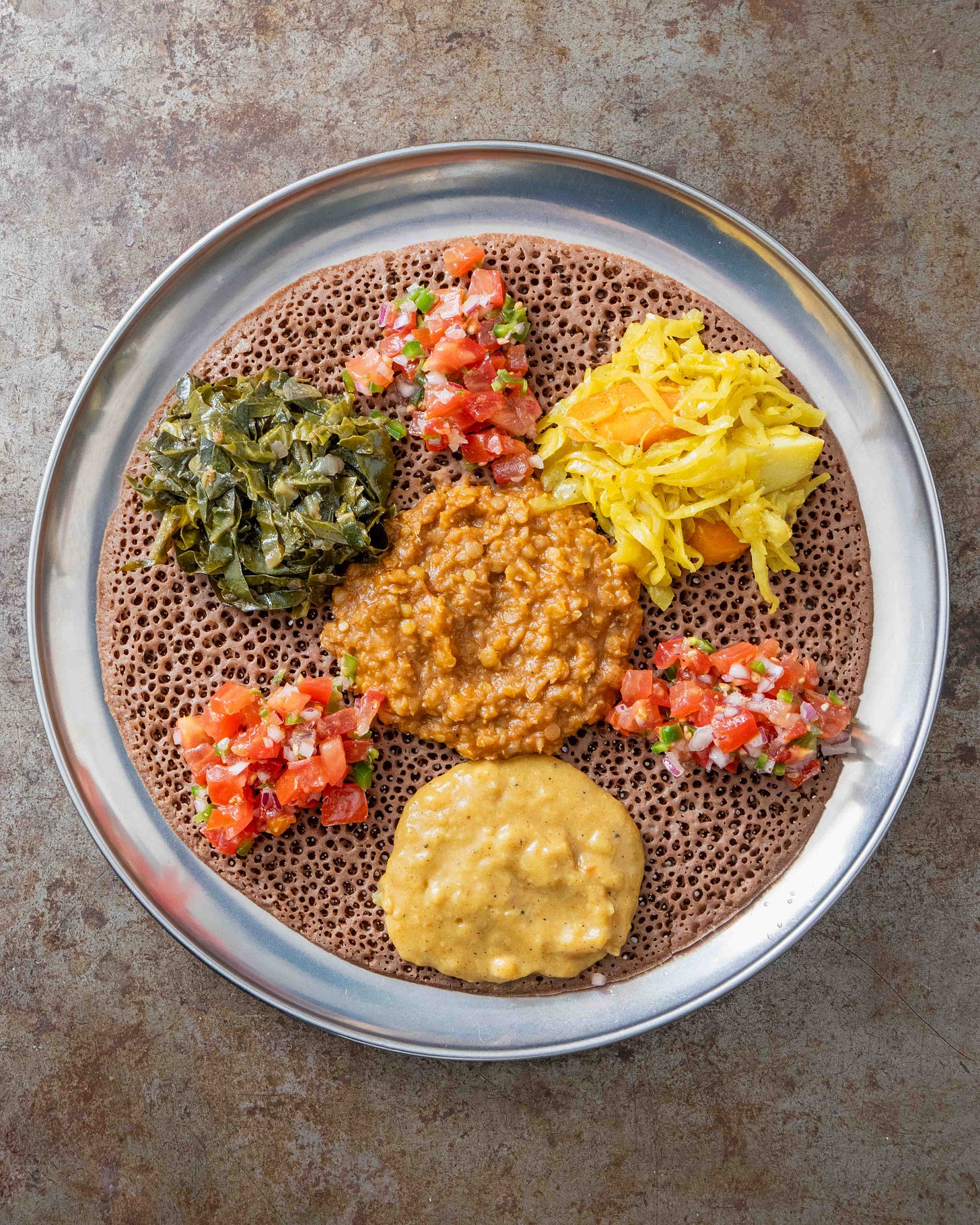A Guide to Ethiopia's National Dish - Injera
Fermented teff flour flatbreads for a traditional Yetsom Beyaynetu
The first time I made Injera, everything went smoothly. The dough fermented beautifully, the gelatinisation worked like a charm, and as soon as it hit the pan, the iconic “eyes” formed within seconds. The result were soft, spongy Injera that came loose from the pan with ease. The batches that followed… were an absolute disaster. Suddenly, the dough didn’t rise during fermentation, the batter felt flat, not a single eye appeared and the Injera stuck to the pan with no way to salvage it. What made it even more frustrating was that I hadn’t changed anything — or so I thought. Turns out, I’d overlooked a crucial step. But more on that later.
What is Injera?
Let me begin with a small correction. Injera is not only the national dish of Ethiopia, but also of Eritrea — especially if paired with a range of traditional stews. The flatbread is known for its soft, spongy texture and the countless eyes all across the surface. These little air holes perfectly soak up the flavours of the many dishes that are usually served on top for a traditional Yetsom Beyaynetu, an exciting plant-based platter. To create this complete feast, check out my previous post.
Foods like Injera are among the oldest continuously prepared dishes on the planet. It’s made from teff, the world’s tiniest grain, that has been cultivated since as far back as 10,000 BC, sustaining communities across the Horn of Africa. It’s not surprising then that Injera also happens to be incredibly healthy. It’s rich in fibre, packed with minerals and the fermentation process makes many of the nutrients more bioavailable.
The process of making Injera is notoriously difficult (though it won’t be, if you follow this guide, I promise). You begin by creating your own starter culture, much like sourdough, before using it to ferment the main dough. Before cooking, a small part of the dough is gelatinised and mixed back in to achieve the right texture. The challenge is to work with a dough that is entirely gluten-free, yet needs to trap wild yeasts of the fermentation to form the essential eyes by the time you cook it. Even in Ethiopia, many families call in an injera gagari — the local expert who swings by to make enough Injera to last the week.
After my initial struggle, making it has actually become quite straightforward. There are just a few things to keep in mind…






